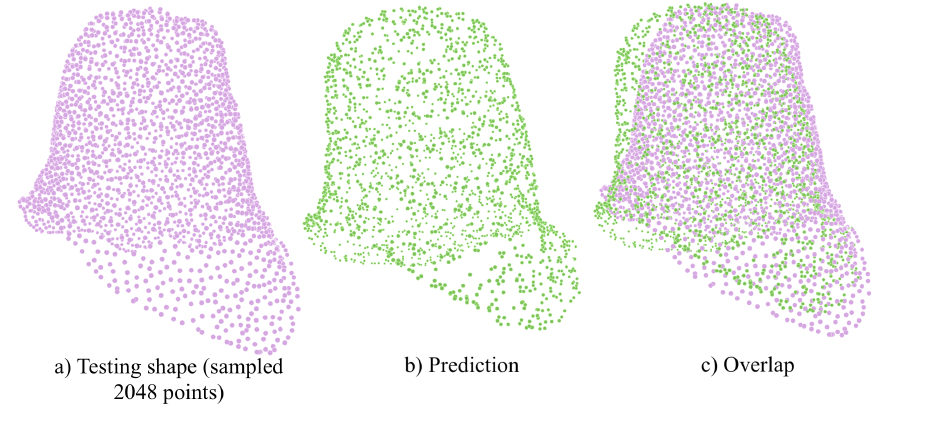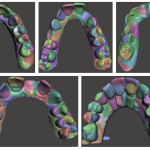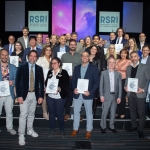3D generation of dental crown bottoms using context learning

Abstract
The generation of valid and realistic dental crown bottoms plays a central role in dentistry, as dental crown bottoms are the first point of contact between a tooth preparation and its crown. Every tooth is different, and the retention of the crown bottom heavily depends on how well it fits the preparation while conserving essential properties for ceramic adhesion and smoothness. From this, the generation of the crown bottom becomes a difficult task that only qualified individuals such as dental technicians can complete. Standard geometric modelling techniques such as computer-aided design (CAD) software programs have since been used for this purpose, providing a reliable basis for the generation of dental crown bottoms. Conversely, recent improvements in deep learning have presented new avenues in shape generation tasks that allow for personalized shapes to be created in a short period of time based on learned context. Starting from a set of preparation shapes, this project seeks to compare the efficacy of automatic geometric techniques to deep learning methods in the framework of dental crown bottom shape generation. Results show that deep learning methods such as GANs demand no human manipulation and provide similar visual results to the geometric model on unseen cases in an unsupervised manner. Our code is available at https://github.com/ImaneChafi/C.B.GEN and https://github.com/ImaneChafi/Prep-GAN
1. INTRODUCTION
A cavity is a serious infection of the teeth that must be treated quickly. Dental preparations remove this infection
and prepare the tooth to receive a crown. A crown bottom is the first point of contact of the new crown to
be put atop the prepared teeth. Due to the high degree of uniqueness in human teeth, poor crown bottom
design can lead to loose crowns, increasing the risk of cavity formation.1 Current methods for crown bottom
generation involve human manipulation by adding a cement gap and spacing for the margin line extension using
computer-aided design software (CAD). This takes time and expertise, and although current dentistry software
using computer aided design provide sliders and manual segmentation to generate the crown bottom from the
preparation, it demands human expert manipulation and lacks automation. To solve this problem, artificial
intelligence can help us generate dental crown bottoms automatically, thus alleviating the workload on dental
technicians and allowing more time for the design of crown shells. One of the many challenges in the case of
crown bottom generation using machine learning is its consistency, due to the unique nature of human teeth. Our
goal is to investigate and compare the use of automated geometric solutions, as well as deep learning solutions
that will allow for crown bottoms to be created in an automated manner, which in turn ameliorates the crown
generation pipeline. In addition, the proposed method will be compared to an automated geometric solution.
1.1 Related work
A crown bottom involves a set of geometric constraints to be followed to be as close as possible to the prepared
teeth, while still allowing enough space for cement to merge the crown and the preparation.2 A crown is comprised
of a shell, a margin line as the delimitation between the preparation and the crown and a crown bottom as the
shape that connects the preparation and the new crown. According to a paper by ELOS Medtech,3 the cement
gap should be in the range of microns for maximum crown retention. The cement gap closer to the margin line
should be near 0 microns. At 35 microns from the margin line, the crown bottom should be smoothed-out to
remove possible misshapes from undercuts.
Current research on crown generation456compared the performance of automatic CAD designs for crown
generation to dental technician’s work, and concluded that the performance is similar to experts. Research
following deep learning in dentistry such as this paper7 proposes the use of a two-stage generative adversarial
network based on the use of a conditional Generative Adversial Network (DCPR-GAN) that learns feature
correspondences between a crown and the previous teeth’s defects to solve occlusion issues,7 but do not use
machine learning methods for their crown bottom (adhesive layer). This article by Lessard et al.8 tests the
adoption of a GAN for the generation of a dental crown. The authors show that GANs provide the ability
to generate dental crowns through point completion, but that there exists difficulties in noise appearing if the
preparation is missing before crown generation. One of the main limitations of this model is the lack of high
precision detailing. Current state-of-the-art models for shape generation following anatomic shapes include
ShapeGF,9 LION10 and SP-GAN.11 This last article’s model follows a parts-aware deformation and generation,
through the use of a sphere global prior and a gaussian local prior, feeding a prior latent matrix for dense
correspondence. Using the well-known dataset ShapeNet,12 SP-GAN achieves better qualitative results, more
details and less noise than tree-GAN,13 ShapeGF9 and PointFlow.14 As the crown bottom is attached to the
shell, the need for a comprehensive model for its generation is an important step in the creation of the crown
shell. To the best of our knowledge, the process of automating the crown bottom shape using deep learning
and comparing it to current methods of CAD-based generation has yet to be studied and is important in future
crown generation steps, which showcases the critical nature of our research objective.
1.2 New work to be presented
The practicality of this field has yet to be studied in relation to how precisely a dental technician creates a crown
bottom, and whether artificial intelligence can help in the generation. We propose: 1) a novel fully-automatic
geometric method for full crown-bottom generation from a preparation shape; 2) an original unsupervised generation
from a GAN network machine learning method inspired by SP-GAN,11 specific to crown bottoms and a
comparison to the geometric method; 3) our code for both the geometric method and the deep learning method
is available online. We have also made our outputs for the GAN-based generated model available on our github.
You may read the full publication here or download the pdf version.



